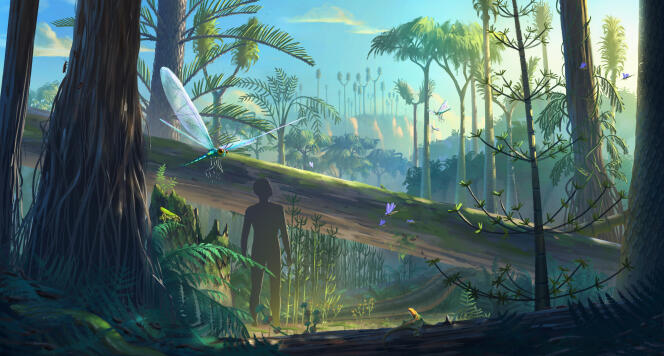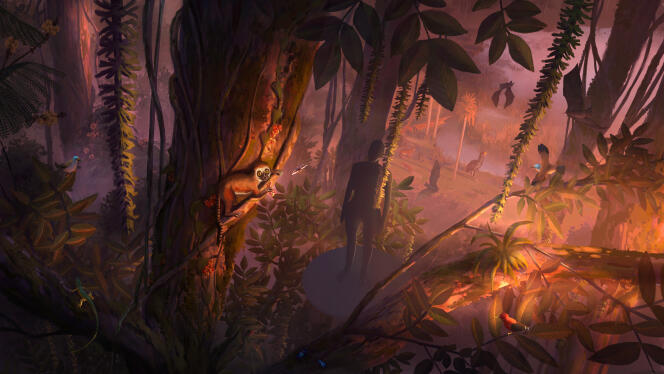
3.5 billion years of evolution as if you were there

It is a black and white forest that adorns the enormous bay of the mineral gallery at the National Museum of Natural History in Paris. These cabalistic signs are all signs of the VR headset cameras you’ll be invited to wear if you walk through the door of the immersive exhibition “Vanishing Worlds,” open on October 14. Lines on the walls allow the system to accurately determine your location in space. You’ll make way for colorful and lively scenes, as you venture into following Charlie, the intrepid biologist, and her flying robot, Darwin, the goofy guide to time travel.
The museum and its researchers have collaborated with Excurio, a company that designs 3D expeditions, to which we already owe “Eternelle Notre-Dame” and “L’Horizon de Khéops”. Beyond the burnt-out cathedral and eroded pyramids, this is a natural monument taken up by the creators of virtual universes: the history of life, in nine lively chapters, from the formation of our planet to today, through the Cambrian, Jurassic and Paleolithic. Until the Eocene.
The experience is much richer than a 3D cinema session: immersion allows for a scripted excursion, a forty-five-minute excursion that encapsulates 3.5 billion years of evolution. The spectacle is great: wide panoramas, diving, climbing to the canopy, a fleeting interaction with the Floresian man, his extinct cousin… Between the giant centipedes swarming at your feet, the ichthyosaurs swimming alongside you or the tyrannosaurs and triceratops threatening to tear each other apart, sometimes not We literally know where we are headed.
Wow effect
This amazing 360-degree view is not entirely without side effects: beware of the onset of migraines or dizziness for the more sensitive. The designers took care to infuse just the right amount of creatures to spice up the experience – you’ll encounter one hundred and twenty species of animals evolving among a hundred plants – without inducing claustrophobia, they stress. However, young children may be at risk of some encounters, so much so that a visit, possible from the age of 8, is recommended from the age of 11.

The museum chose a gamified form of knowledge sharing, with a story modeled after the quests we sometimes encounter in video games. Will the dazzling effect ensure a better understanding of life history by visitors, or will they be so immersed in the spectacle that they will not retain the scientific information gathered throughout the trip? However, the foundation plans to distribute a take-home booklet featuring the ancient landscapes, their symbolic types, and instructions on how to observe them “in real life” in the museum’s windows. This messing around will not be a luxury, given the high cost of access to these “disappearing worlds” (29 and 24 euros), which threatens to restrict access.
You have 2.52% of this article left to read. The rest is reserved for subscribers.

“Incurable web evangelist. Hipster-friendly gamer. Award-winning entrepreneur. Falls down a lot.”
